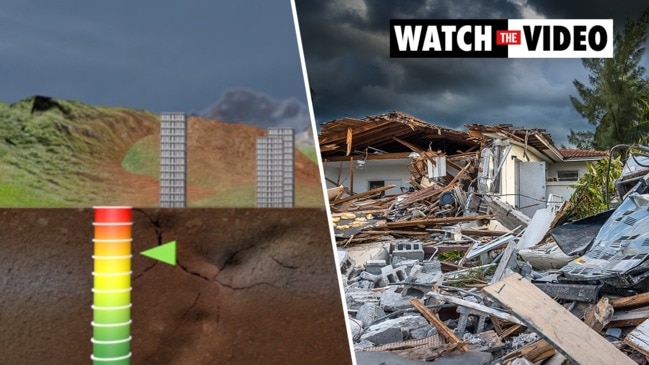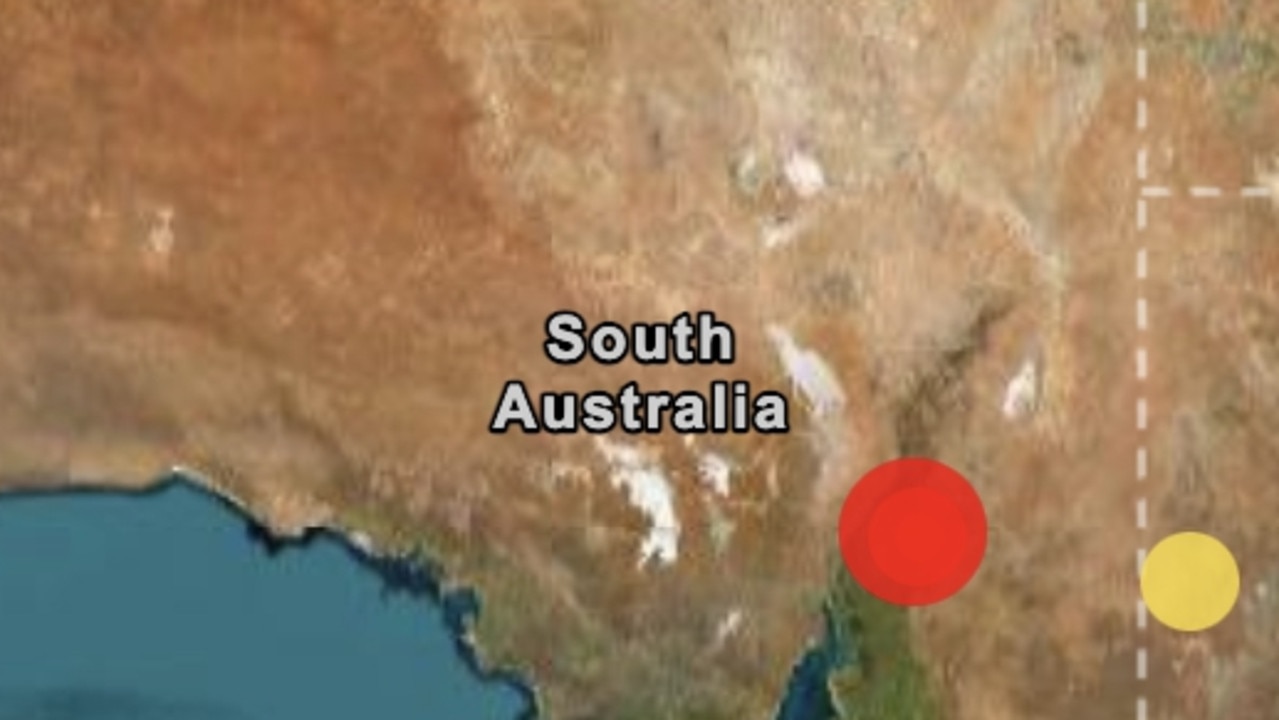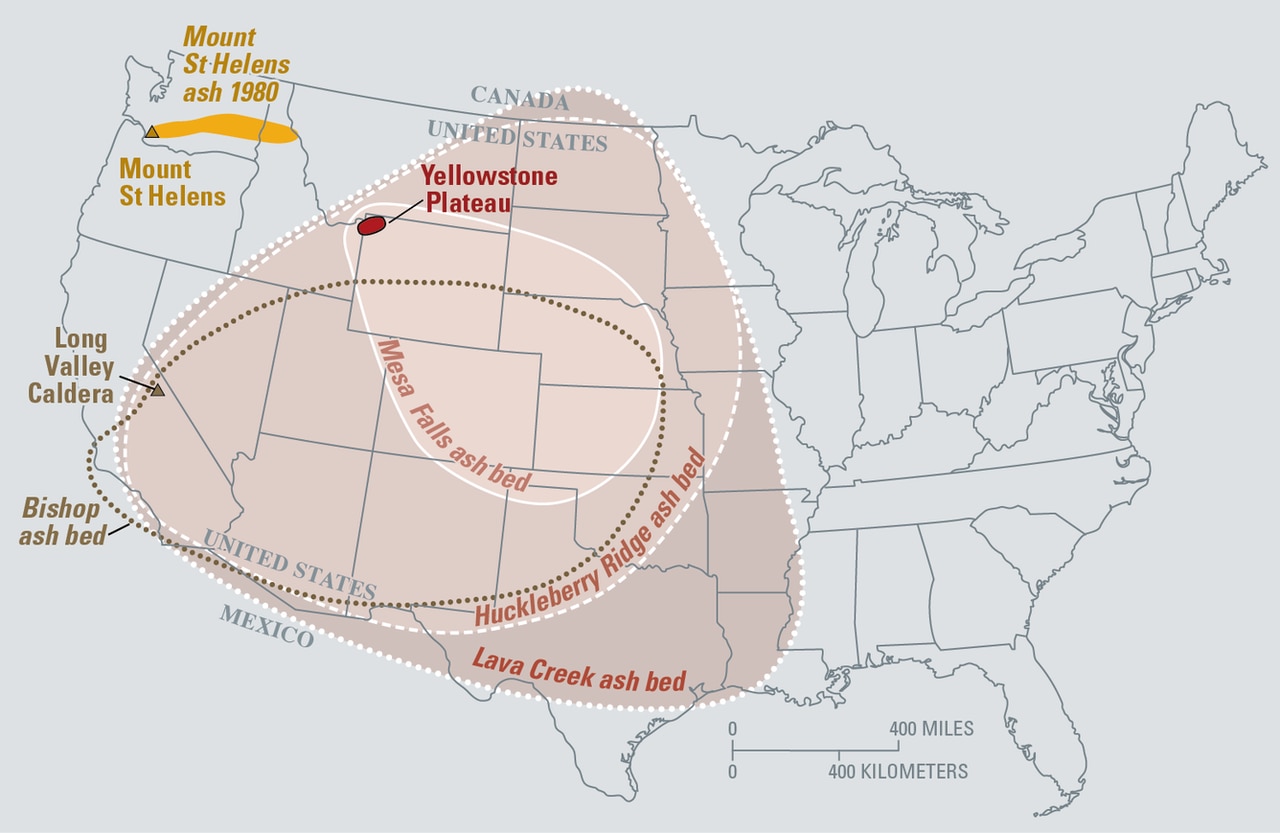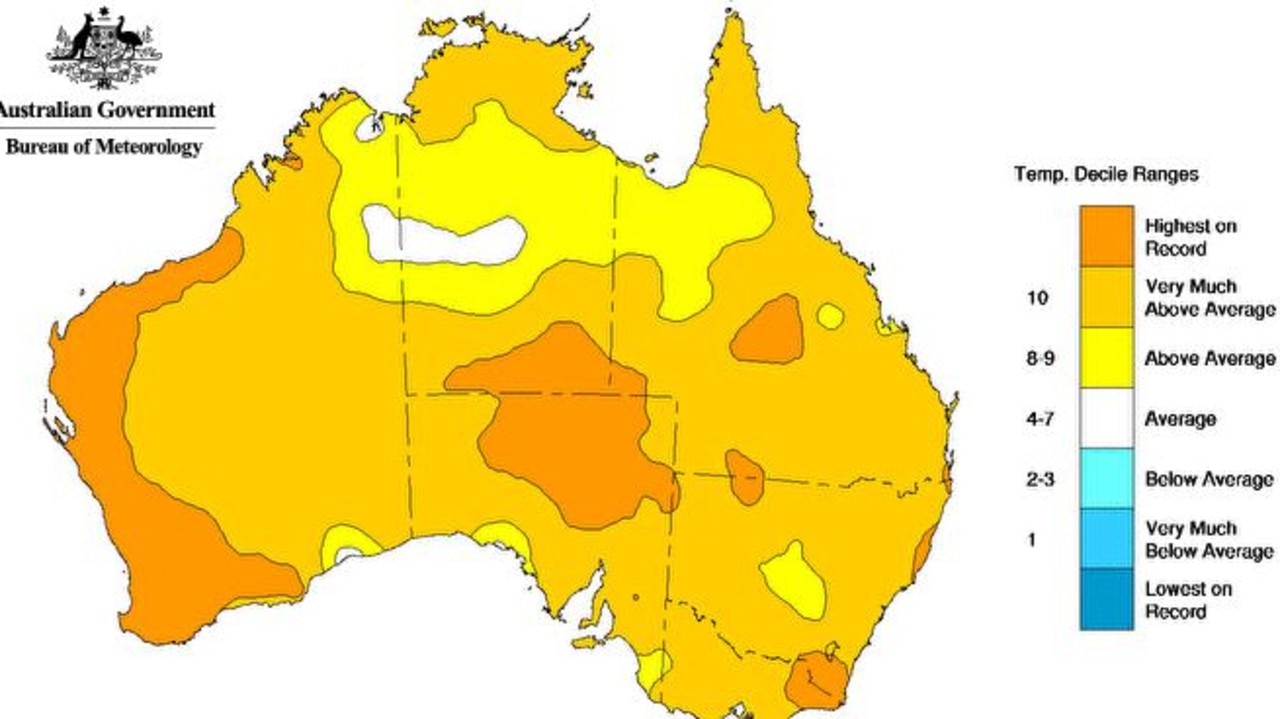Hundreds killed as powerful earthquake and tsunami hit Indonesia
INDONESIA has called for international help as the death toll from a series of powerful earthquakes and a tsunami reached at least 832 people. WARNING: Graphic images
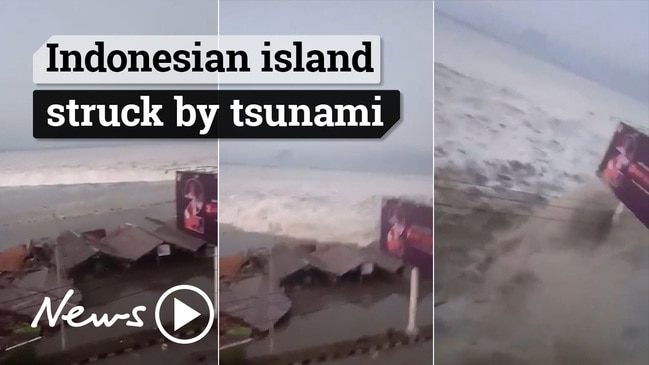
WARNING: Graphic content may affect some readers.
THE Indonesian government has called for international help to deal with the aftermath of a devastating series of earthquakes and a tsunami in the island region of Sulawesi that killed at least 832 people.
President Joko Widodo “authorised us to accept international help for urgent disaster-response” the government’s head of investment Tom Lembong said, as dozens of aid agencies and NGOs lined up to provide life-saving assistance and the government struggled to come to terms with the sheer scale of the disaster.
The strong 7.5-magnitude quake struck on Friday, toppling buildings and sending walls of seawater crashing into Palu, a city of about 350,000.

Exhausted survivors scoured makeshift morgues for loved ones, and authorities struggled to dig out the living or assess the scale of the devastation in more remote regions beyond Palu.
Grim warnings came that the eventual toll could reach thousands.
“The casualties will keep increasing,” said national disaster agency spokesman Sutopo Purwo Nugroho. “We will start the mass burial of victims, to avoid the spread of disease.”
Burials were expected to start later today.

Rescuers raced against the clock and a lack of equipment to save those still trapped in the rubble, with up to 60 people feared to be underneath one Palu hotel alone.
Two survivors have been plucked from the rubble of the 80-room Hotel Roa-Roa, the search and rescue agency said, and there could still be more alive.
Indonesia’s National Search and Rescue Agency released images of a 25-year-old woman it identified as Fitri, who it said was pulled out of the rubble at 7pm Sunday.
The agency released several images of the woman lying on an orange plastic stretcher, covered in a white blanket.

Desperate survivors turned to looting shops for basics like food, water and fuel as police looked on, unwilling or unable to intervene.
“There has been no aid, we need to eat. We don’t have any other choice, we must get food,” one man in Palu told AFP as he filled a basket with goods from a nearby store.
The disaster agency said a tsunami warning system, which might have saved lives, had not worked for six years due to a lack of money.
“Our funding has been going down every year,” the disaster agency’s Nugroho said.

PORTS, BRIDGES, ROADS SHATTERED
Save The Children program director Tom Howells said access was a “huge issue” hampering relief efforts.
“Aid agencies and local authorities are struggling to reach several communities around Donggala, where we are expecting thereto be major damage and potential large-scale loss of life,” Howells said.
The national disaster agency said it believed about 71 foreigners were in Palu when the quake struck, with most safe.
Three French nationals and a South Korean, who may have been staying at a flattened hotel, had not yet been accounted for, it added.
Getting enough aid in may prove a problem.
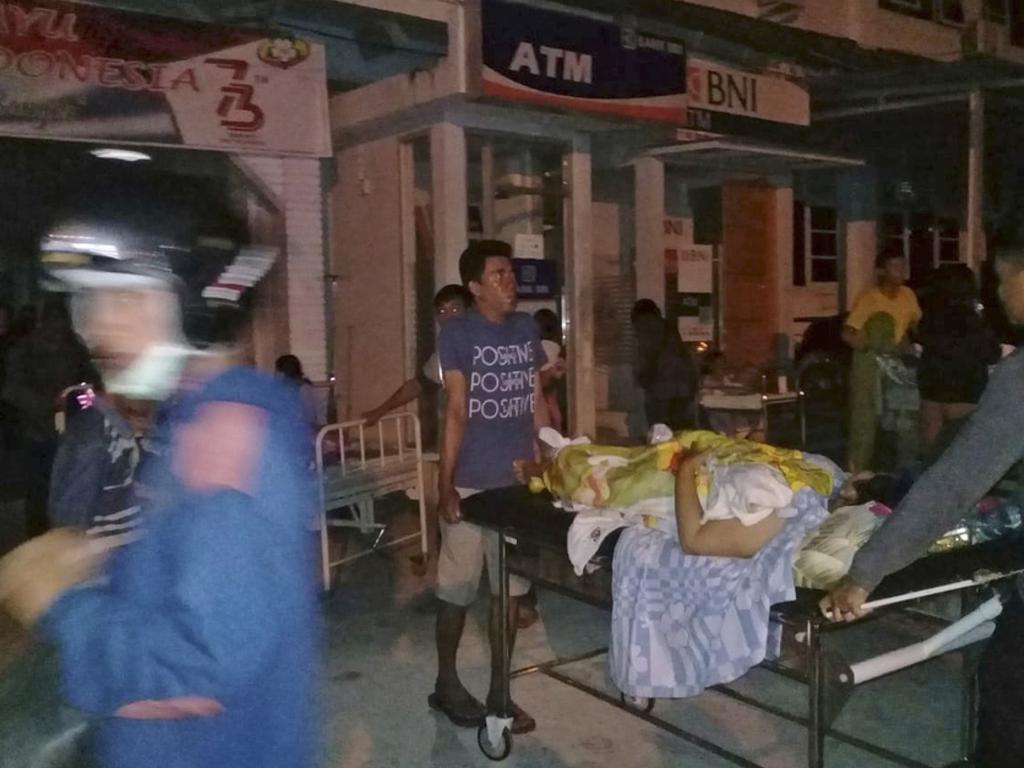
Satellite imagery provided by regional relief teams showed severe damage at some of the area’s major ports, with large shipstossed on land, quays and bridges trashed and shipping containers thrown around.
A double-arched yellow bridge had collapsed, its ribs twisted as cars bobbed in the water below.
A key access road had been badly damaged and was partially blocked by landslides.
The initial quake struck as evening prayers were about to begin in the world’s biggest Muslim majority country on the holiestday of the week.
‘WHEN THE WAVE CAME, I LOST HER’
Many have spent the last two days desperately searching for loved ones. One survivor, Adi, was hugging his wife by the beachwhen the tsunami struck on Friday. He has no idea where she is now, or whether she is even alive.
“When the wave came, I lost her,” he said. “I was carried about 50 metres. I couldn’t hold anything. The water was spinningme around,” he said.
“This morning I went back to the beach, I found my motorbike and my wife’s wallet.” Others have centred their search aroundopen-air morgues, where the dead lay in the baking sun — waiting to be claimed.
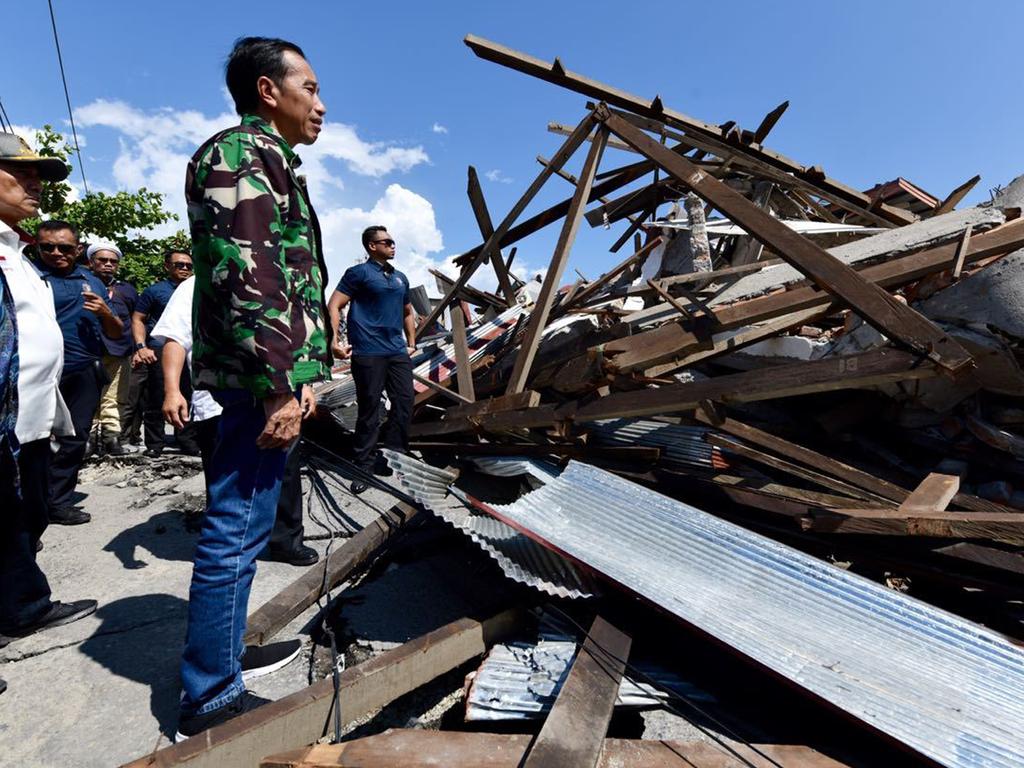
Hundreds of people gathered at the wrecked eight-storey Tatura Mall searching for loved ones.
“Grieve for the people of Central Sulawesi, we all grieve together,” President Joko Widodo tweeted late on Sunday.
Most of the confirmed deaths were in Palu itself, and authorities are bracing for the toll to climb as connections with outlying areas are restored.
Of particular concern is Donggala, a region of 300,000 people north of Palu and close to the epicentre of the quake, and two other districts, which have been cut off from communications since Friday.
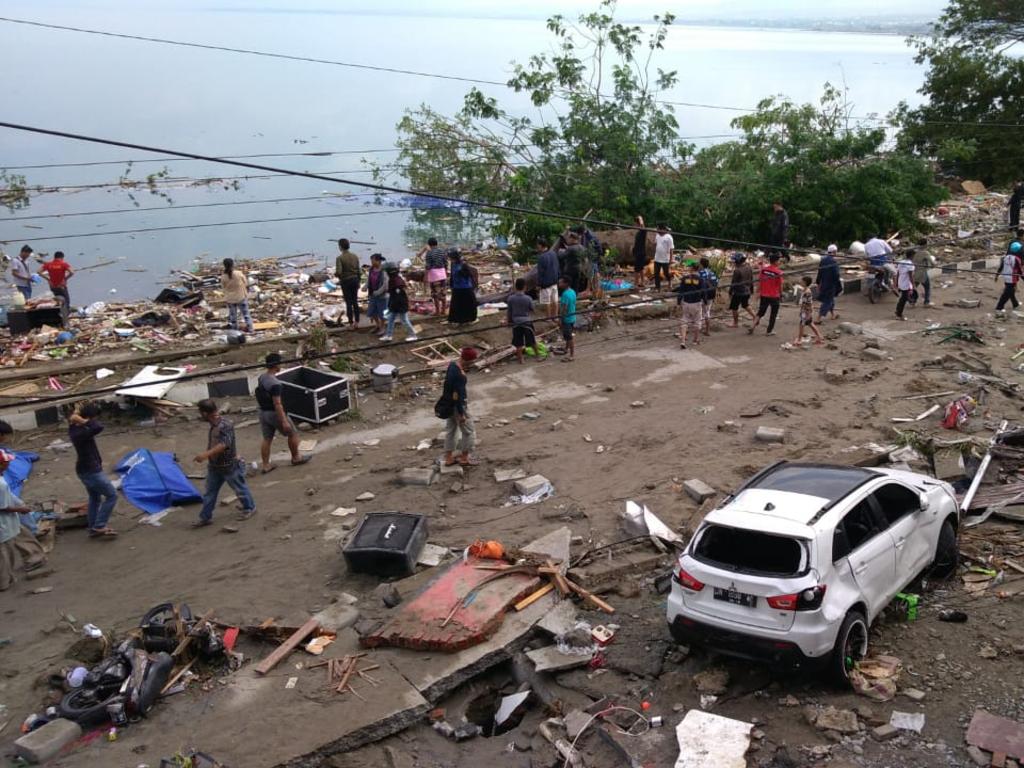
“The death toll is believed to be still increasing since many bodies were still under the wreckage, while many have not been reached,” said disaster agency spokesman Sutopo Purwo Nugroho.
He said a mass burial was held on Sunday for health reasons.
Along with Palu, these districts have a combined population of about 1.4 million.

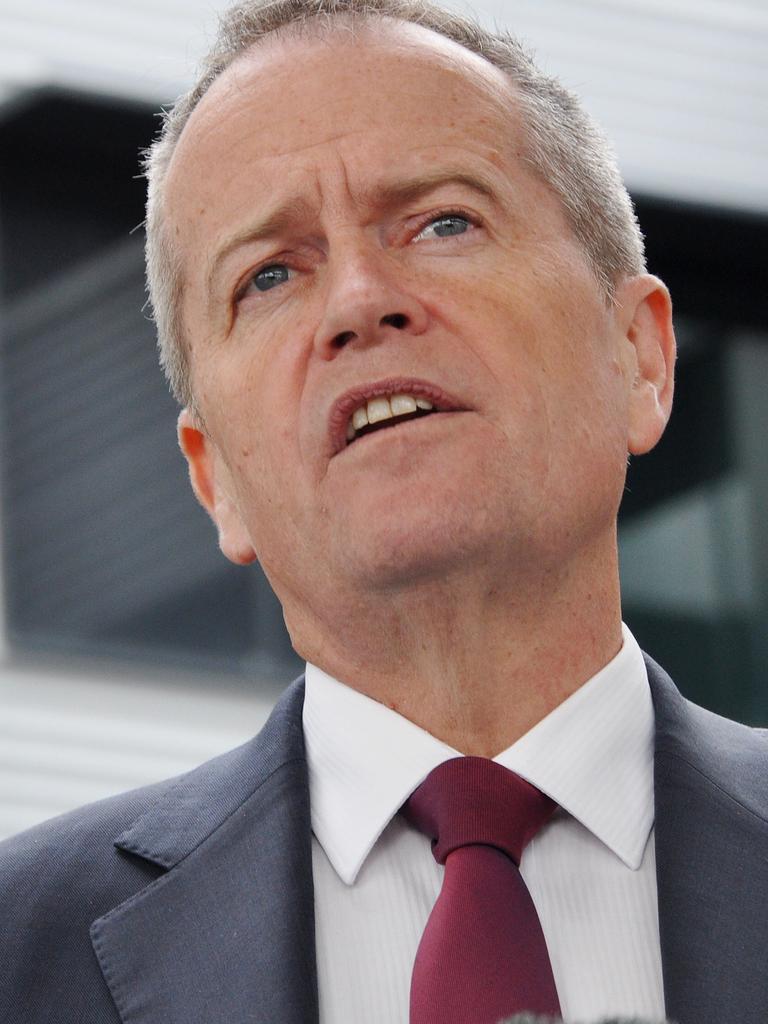
Prime Minister Scott Morrison says the Australian government is standing ready to provide assistance if it’s requested but Indonesia has yet to ask.
“This is a terrible tragedy,” Mr Morrison said today.
“Australia stands ready to assist as is needed. But I think it’s important that all of our empathy and thoughts are with them in what must be a most horrific time for them.
“The Foreign Minister is working closely with other counterparts in Indonesia to correspond with any assistance which is necessary.”
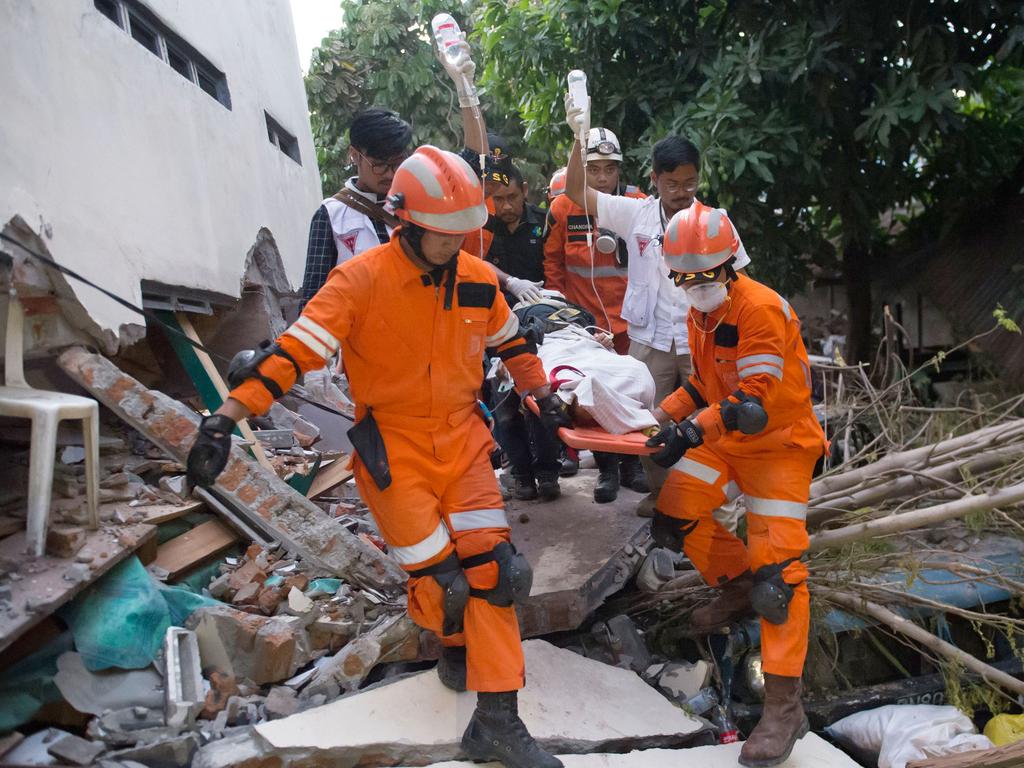
Earlier, Mr Morrison told the ABC he called Mr Widodo overnight to express his sympathies and pledge support.
Opposition Leader Bill Shorten said the Sulawesi disaster was particularly tragic because it came so soon after August’s Lombok earthquake.
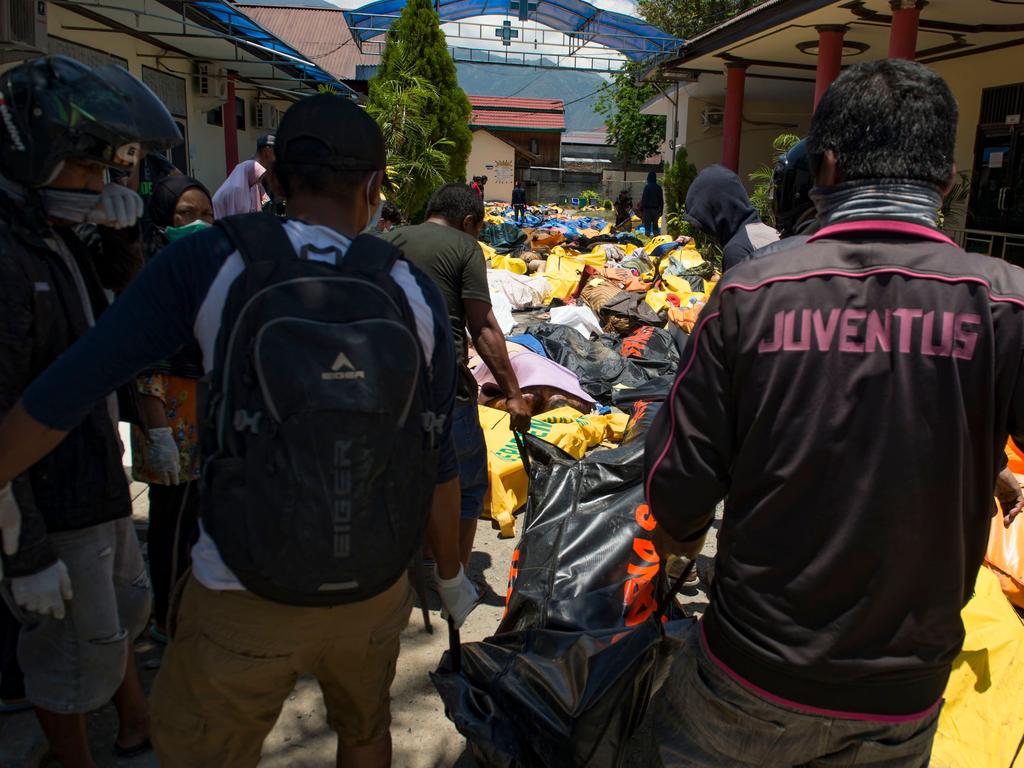
“Labor stands with the government in offering whatever support is needed to help the people of Indonesia recover from this tragedy,” he said.
“Australia should consider all available options to help in the immediate aftermath of this tragedy, as well as longer term assistance to support the people of Sulawesi to rebuild their homes and infrastructure.”

No Australians are known to have been affected by the disaster.
Five foreigners — three French, one South Korean and one Malaysian — were among the missing, National Disaster Mitigation Agency spokesman Sutopo Purwo Nugroho said.
Earlier, Mr Widodo visited a housing complex that was flattened in the quake and called for patience.
“I know there are many problems that need to be solved in a short time, including communications,” he said.
Television footage showed scores of residents in one neighbourhood shouting for food as soldiers distributed rations from a truck.
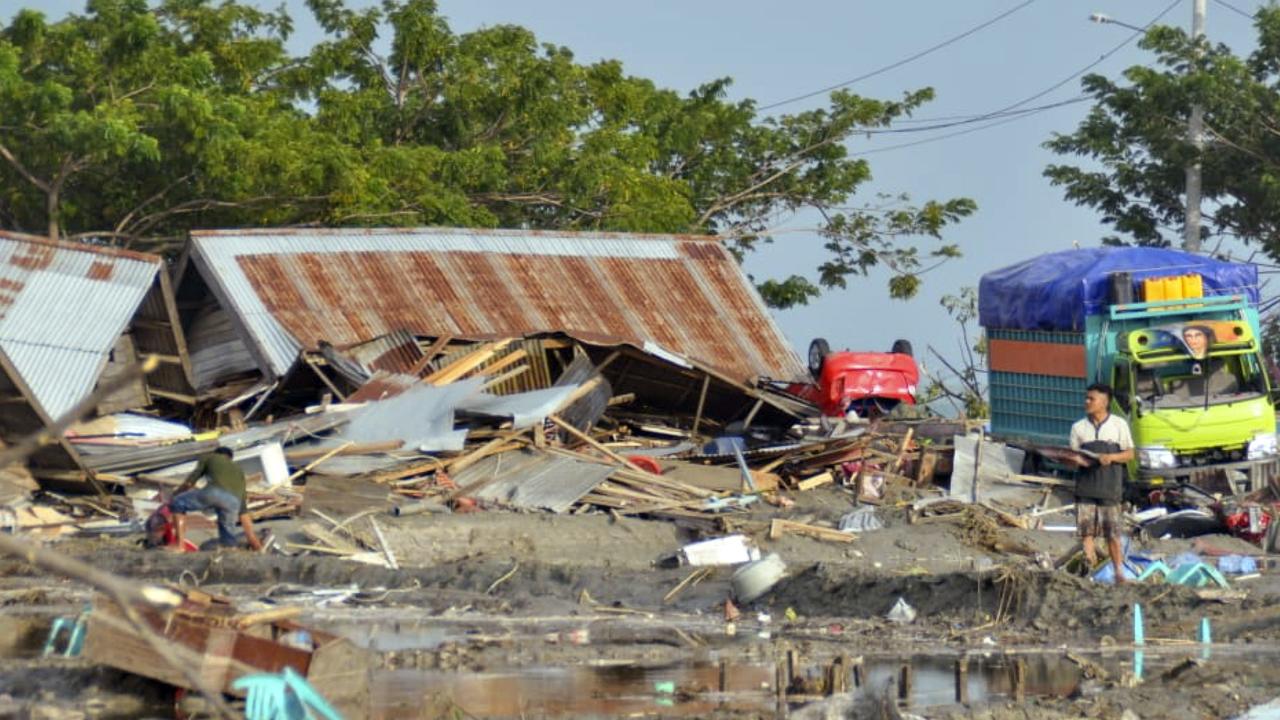
Other footage showed people making off with clothes and other items from a wrecked mall.
Asked about reports of looting, Internal Affairs Minister Tjahjo Kumolo said he had ordered authorities to help people get food and drink, and that businesses would be compensated.
State logistics chief Budi Waseso said his agency was preparing to send hundreds of tonnes of government rice stocks to affected areas.
Finance Minister Sri Mulyani Indrawati said the government had allocated 560 billion rupiah ($A52 million) for disaster recovery, media reported.
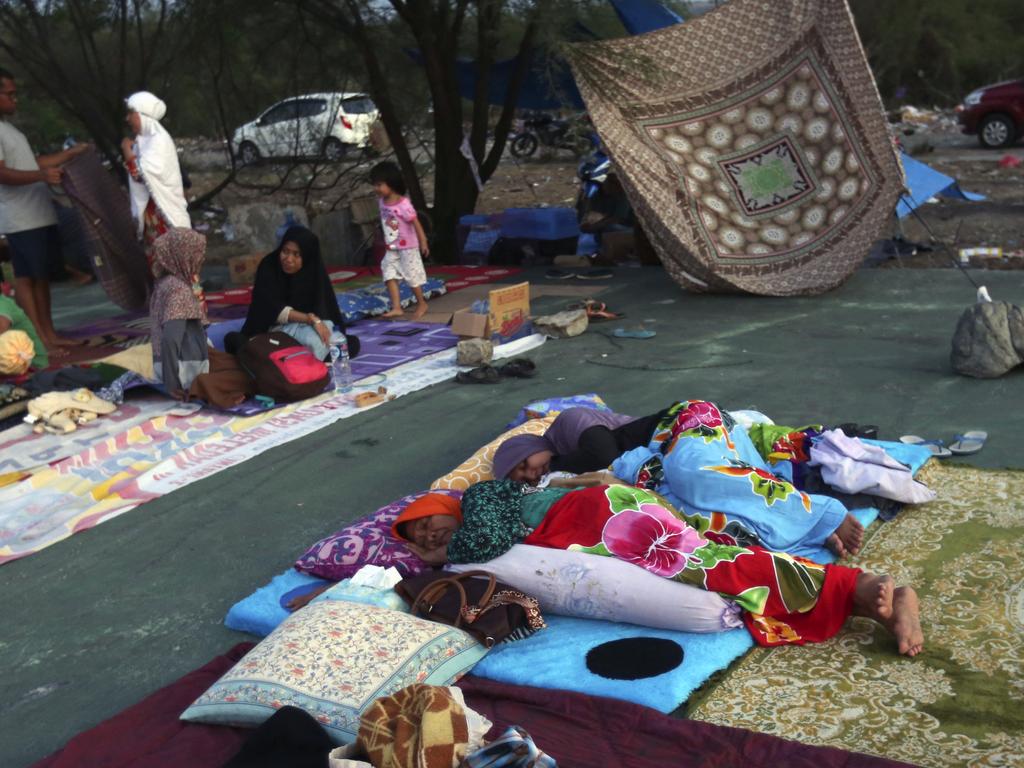
BODIES LINE THE STREETS
Bodies covered in blue and yellow tarps lined the streets of Palu, while rescuers dug through rubble in the hopes of finding survivors from the twin disasters that struck on Friday evening.
There was particular focus on the eight-storey Roa-Roa Hotel, where voices from underneath the rubble could be heard calling out for help on Saturday.
The cries from beneath the hotel, which appeared to have toppled over with its walls splintered like pick-up sticks, had gone silent by Sunday afternoon.
Officials had estimated some 50 people could be inside.
“We are trying our best. Time is so important here to save people,” said Muhammad Syaugi, head of the national search and rescue team.
“Heavy equipment is on the way.”

Metro TV showed about a dozen rescuers in orange jumpsuits climbing over debris with a stretcher carrying the body of a victim from the modest business hotel.
Other rescuers were working to free a 15-year-old girl trapped under concrete in her house in Palu after it collapsed on her family during the magnitude-7.5 earthquake that spawned a tsunami.
Unable to move her legs under the heavy concrete rubble, Nurul Istikharah was trapped beside her dead mother and niece.
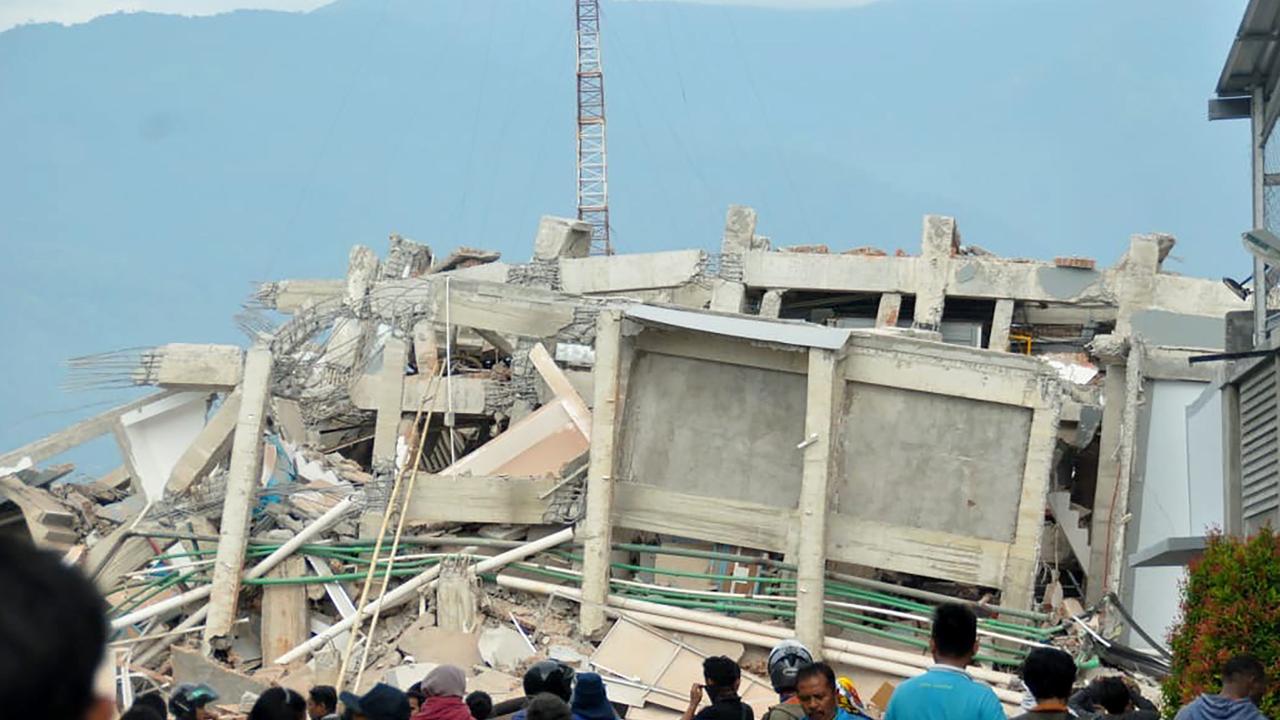
Rescuers struggled to control water from a leaking pipe, fearing the girl may drown.
Istikharah was unconscious during part of the effort to free her, but rescuers continued to talk to her to try to keep her awake. Others offered her food and water.
Aid and supplies were being sent to the area via military and commercial aircraft, including helicopters, to reach badly affected areas.
Officials said the area was lacking medical supplies, fuel, freshwater and experts.
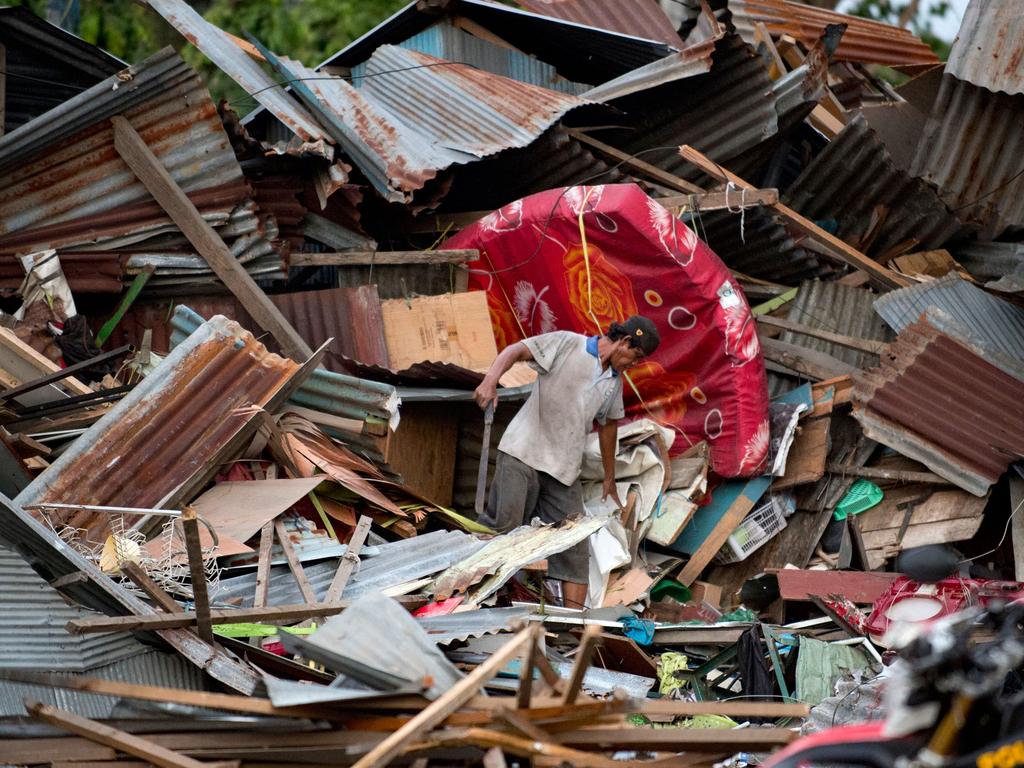
President Widodo toured Palu on Sunday.
“There are many challenges,” he said.
“We have to do many things soon, but conditions do not allow us to do so.”
He said rescuers were having difficulty recovering victims because of a shortage of heavy equipment.
He said authorities were deploying more heavy machinery that he hoped would arrive Sunday night so emergency workers can help recover more victims on Monday.
In Donggala, the site closest to the earthquake’s epicentre, aerial footage aired on Metro TV showed the sugary blond sands of beaches swept out to sea, as were some buildings.
Damage to some buildings in the town was severe, with plywood walls shredded and chunks of concrete scattered on the pavement.
Much of the damage, however, appeared limited to the waterfront.

Palu, which has more than 380,000 people, was strewn with debris from the earthquake and tsunami.
A mosque heavily damaged by the quake was half submerged and a shopping mall was reduced to a crumpled hulk.
A large bridge with yellow arches had collapsed.
The city is built around a narrow bay that apparently magnified the force of the tsunami waters as they raced into the tight inlet.
Nugroho, the disaster agency spokesman, said waves were reported as high as six metres in some places.
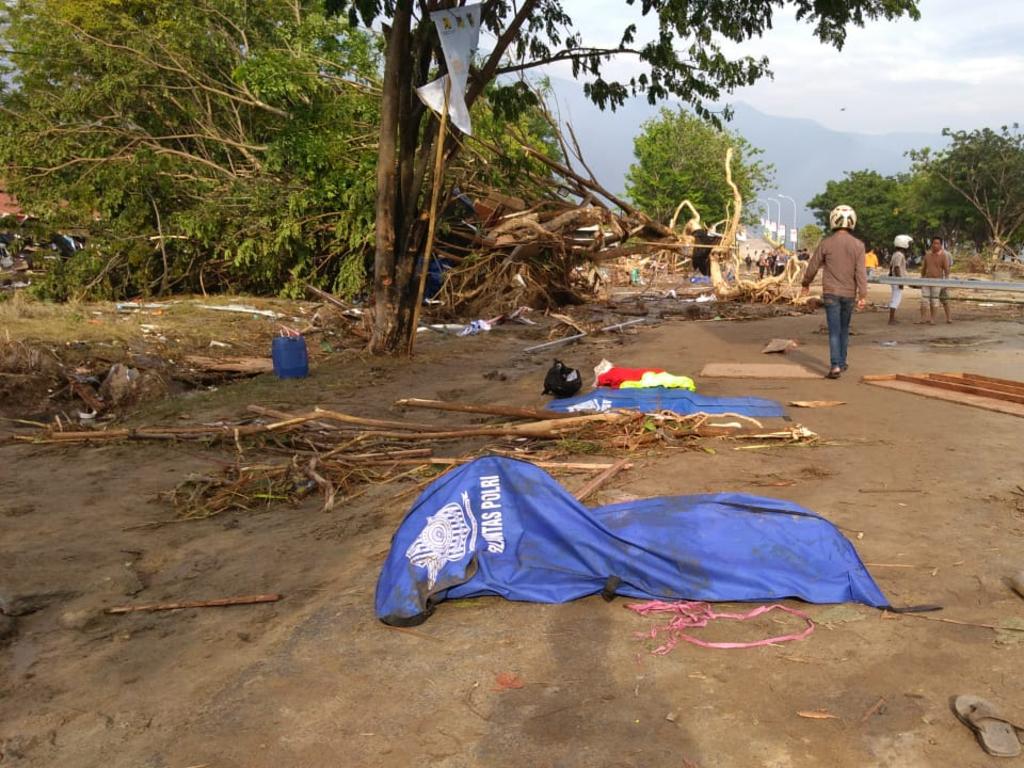
Looters were stealing from the badly damaged shopping mall.
They did not appear to be concerned about their safety, despite ongoing aftershocks and the structure’s questionable stability.
In one devastated area in Palu, residents said dozens of people could still be buried under homes that collapsed.
“The ground rose up like a spine and suddenly fell,” resident Nur Indah said while crying. “Many people were trapped and buried under collapsed houses. I could do nothing to help. In the evening, some of them turned on their cellphones just to give a sign that they were there. But the lights were off later and the next day.”
Indonesia geophysics agency says Sulawesi quake caused a tsunami. This video is doing the rounds. We believe it is real. pic.twitter.com/7xDzzRuj5v
— David Lipson (@davidlipson) September 28, 2018

Nugroho said 61 foreigners were in Palu at the time of the disaster. Most of them had been accounted for, but one South Korean was believed to be trapped in the ruins of the Roa-Roa Hotel, while three others from France and one from Malaysia were missing. The survivors were to be evacuated to the Sulawesi city of Makassar in the island’s far south.
Communications with the area were difficult because power and telecommunications were cut, hampering search and rescue efforts. Most people have slept outdoors, fearing strong aftershocks.
PRISON INMATES FLEE
More than half of the 560 inmates in a Palu prison fled after its walls collapsed during Friday’s quake, said its warden, Adhi Yan Ricoh.
“It was very hard for the security guards to stop the inmates from running away as they were so panicked and had to save themselves too,” he told state news agency Antara.
Ricoh said there was no immediate plan to search for the inmates because the prison staff and police were consumed with the search and rescue effort.
“Don’t even think to find the inmates. We don’t even have time yet to report this incident to our superiors,” he said.

TERRIFYING FOOTAGE OF TSUNAMI
Indonesia’s geophysics agency confirmed the tsunami occurred after the agency originally called off its tsunami warning.
Indonesian TV showed a smartphone video of a powerful wave hitting Palu, with people screaming and running in fear.
The footage purportedly shows a number of small restaurants near the Palu Grand Mall swept away by the wave.
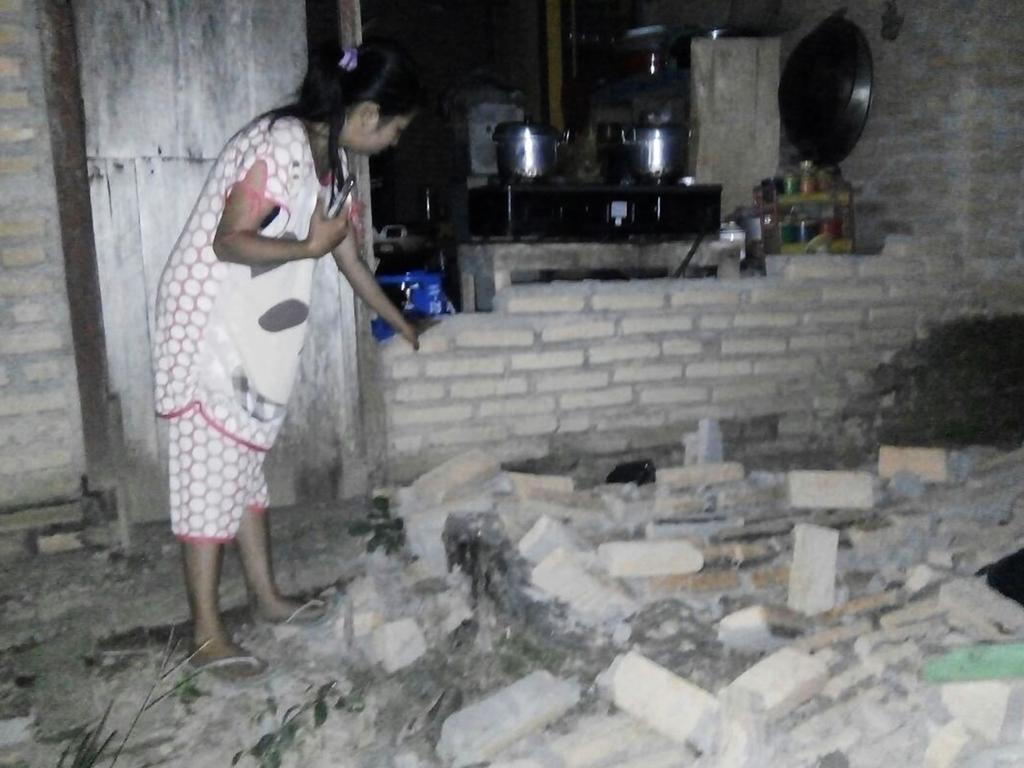
The water smashed into buildings and a large mosque that collapsed under the force.
“I just ran when I saw the waves hitting homes on the coastline,” Palu resident Rusidanto said.
Earlier, the head of the country’s search and rescue agency Muhammad Syaugi told AFP that local staff had found “many” dead bodies.
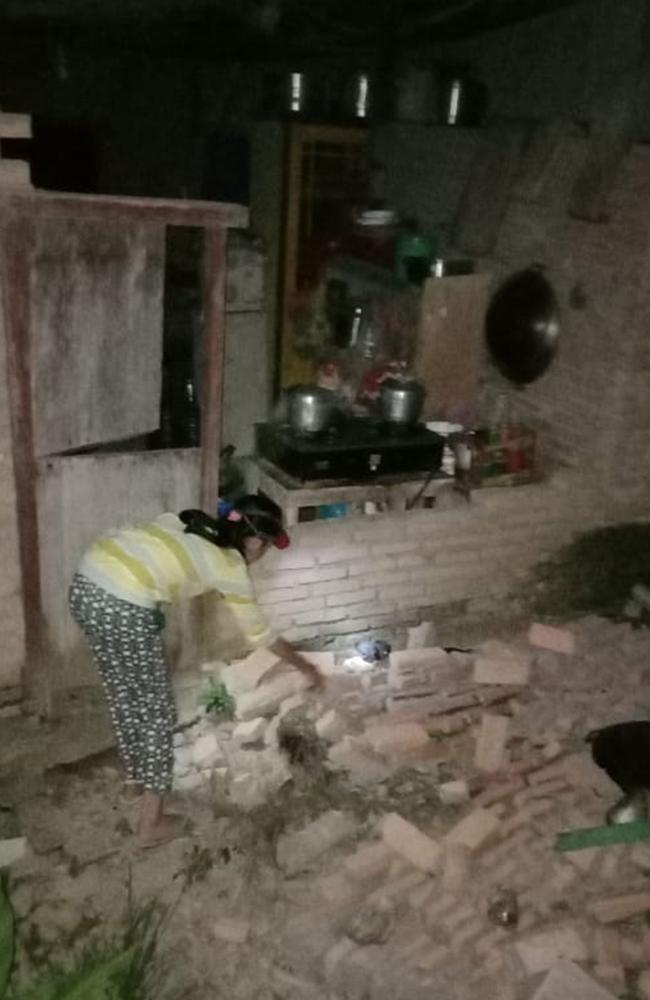
“We’re particularly concerned about the impact of the earthquake on children, who are more vulnerable to being swept away in tsunamis,” said Tom Howells, NGO Save the Children’s Program Implementation Director
The main airport in Palu — a city of 350,000 — was shut after the tsunami struck.
Mr Nugroho has said that essential aircraft can land at Palu airport’s though AirNav, which oversees aircraft navigation, said the runway is cracked and the control tower damaged.
Breaking: Tsunami hits Palu, Indonesia after massive 7.7 earthquake. Major damage is being reported. pic.twitter.com/nRvge2mKy2
— PM Breaking News (@PMBreakingNews) September 28, 2018
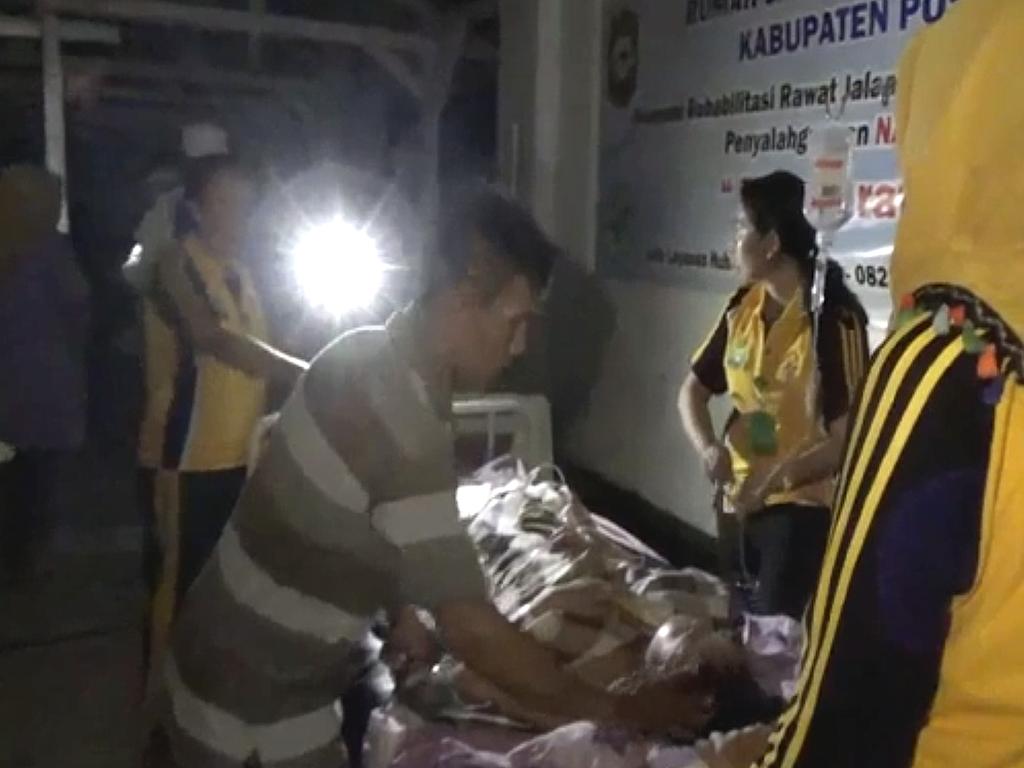
EYEWITNESSES’ TSUNAMI HORROR
Mirza Arisam, a resident of Kendari, the capital of neighbouring Southeast Sulawesi, said his uncle and his family of five, including three children, were on vacation in Palu and he has been unable to contact them since the tsunami hit.
An official with the local disaster agency, Akris, said “many houses have collapsed.”
“It happened while we still have difficulties in collecting data from nine villages affected by the first quake,” he told The Associated Press.
“People ran out in panic.”

Women and children wailed hysterically in a video distributed by the disaster agency, which also released a photo showing a heavily damaged department store. “It was so strong.
The strongest I ever felt. We all ran out of buildings,” said Yanti, a 40-year-old housewife in Donggala who goes by a single name.

“All the things in my house were swaying,” another Donggala resident, Mohammad Fikri, said of the earlier 6.1 quake.
Donggala resident Mohammad Fikri said by telephone that he ran from his house but there wasn’t great panic in his neighbourhood.
“All the things in my house were swaying and the quake left a small crack on my wall,” he said.
“But this was not the first time. Last week we felt an earthquake that had a stronger tremor so this time we didn’t panic, just avoided the buildings and now everything has returned to normal,” Mr Fikri said.
1 orang meninggal dunia, 10 orang luka-luka dan puluhan rumah rusak akibat gempa dengan kekuatan magnitudo 6 mengguncang Donggala Sulawesi Tengah. Daerah yang mengalami kerusakan ada di Kec Sinreja Kab Donggala yang dekat pusat gempa. Gempa susulan masih terus terjadi. pic.twitter.com/u7d27niBYx
— Sutopo Purwo Nugroho (@Sutopo_PN) September 28, 2018
INDONESIA’S ‘RING OF FIRE’
Friday’s tremor was centred 78 kilometres north of Palu, the capital of Central Sulawesi province, but was felt in the far south of the island in its largest city Makassar and on the neighbouring island of Kalimantan, Indonesia’s portion of Borneo island.
The initial tremor, which was followed by a series of powerful aftershocks, struck as evening prayers were about to begin in the world’s biggest Muslim majority country on the holiest day of the week, when mosques are especially busy.
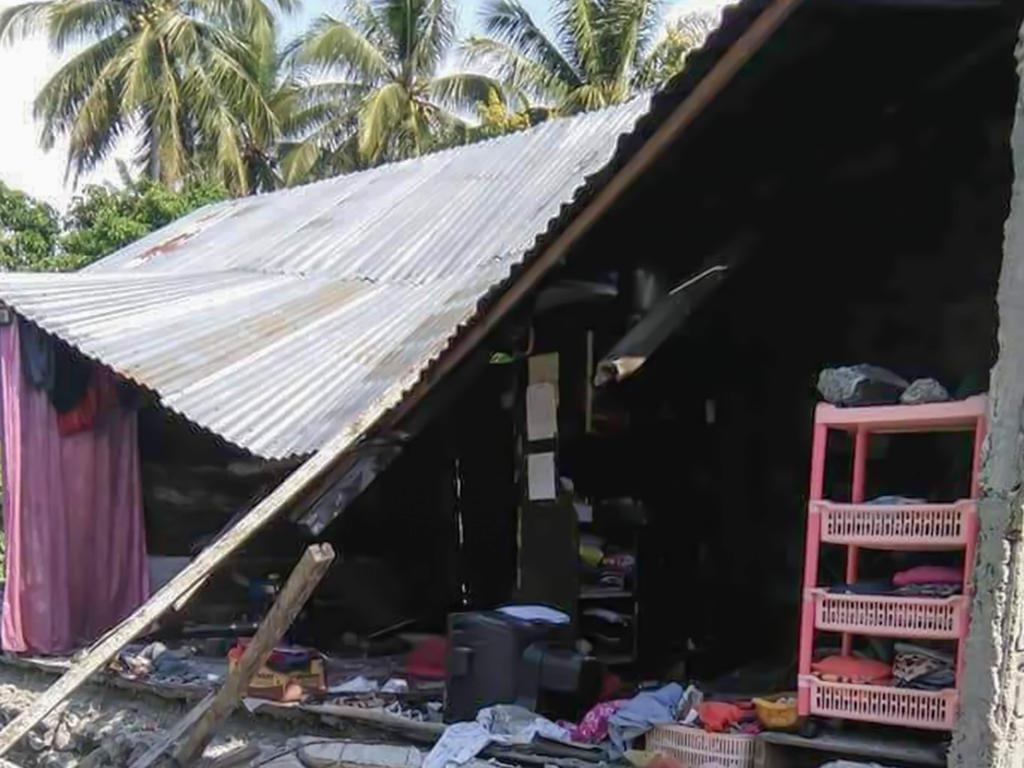
Quakes of similar magnitude can cause great damage to poorly built or badly designed structures, including the toppling of chimneys, columns and walls, according to USGS.
Indonesia is prone to earthquakes because of its location on the “Ring of Fire,” an arc of volcanoes and fault lines in the PacificBasin.
In December 2004, a massive magnitude 9.1 earthquake off Sumatra in western Indonesia triggered a tsunami that killed 230,000 people in a dozen countries.
